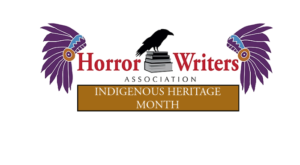Indigenous Heritage in Horror Month: Interview with Nick Medina

Born in Chicago, Illinois, and a member of the Tunica-Biloxi Tribe of Louisiana, Nick Medina appreciates local and Native folklore, which, along with research into the Missing and Murdered Indigenous Women and Girls (MMIWG) epidemic, inspired his debut novel, Sisters of the Lost Nation.
 What inspired you to start writing?
What inspired you to start writing?
I don’t really remember. It’s something I’ve done since I was a child, something I’ve always wanted to continue doing. Hearing from readers about how my work has impacted them definitely inspires me to keep going.
What was it about the horror genre that drew you to it?
More than any other genre, horror is something you feel. And whether we like to dwell on it or not, we all have something in our lives that horrifies us. By writing about the things that cause me unease, I’m able to come to terms with them. Horror is about overcoming, surviving, and becoming stronger. I think that’s why I’m drawn to it.
Do you make a conscious effort to include indigenous characters and themes in your writing and if so, what do you want to portray?
In my debut novel Sisters of the Lost Nation and my upcoming novel Indian Burial Ground, I did purposefully include many indigenous characters and themes. The nature of the stories demanded that I do so. Within these stories, I strive to portray Native and Indigenous characters as normal, everyday people dealing with the same wants, needs, desires, and challenges as any other culture group to combat stereotypes that make Native and Indigenous peoples out to be ancient, mystical, or non-existent.
What has writing horror taught you about the world and yourself?
Writing horror has taught me that you can always find light at the end of even the longest, darkest tunnels, that evil and hopelessness can be overcome, and that no matter where we come from, we’re all united by fear.
How have you seen the horror genre change over the years? And how do you think it will continue to evolve?
To me, it seems that horror has become more diverse, especially in the last ten years. When it comes to Native and Indigenous voices in the genre, it appears that there are more now than ever before. I think—and hope—that we’ll continue to see stories written from different perspectives from writers around the globe.
How do you feel the indigenous community has been represented thus far in the genre and what hopes do you have for representation in the genre going forward?
I’ve been pretty impressed with how the Indigenous community has been represented in the genre over the last few years. So many talented Native and Indigenous writers are sharing stories that are influenced by their culture and upbringing and which challenge stereotypes. My hope is that Native and Indigenous characters will become more prevalent and that they won’t always have to be presented in traditional Native settings.
Who are some indigenous horror authors you recommend our audience check out?
Stephen Graham Jones, Vanessa Lillie, Craig Womack, Erika T. Wurth, Tommy Orange, Rebecca Roanhorse, Marcie Rendon, David Heska Wanbli Weiden, and Amanda Peters are just some of the great Indigenous horror authors I enjoy.
What is one piece of advice you would give horror authors today?
Read as much as you can. Keep up with what your contemporaries are writing. Let them inspire you and spur you on.
And to the Indigenous writers out there who are just getting started, what advice would you give them?
Be true to yourself and your culture. Don’t feel compelled to force Native and Indigenous elements into your work. Write what scares you.



